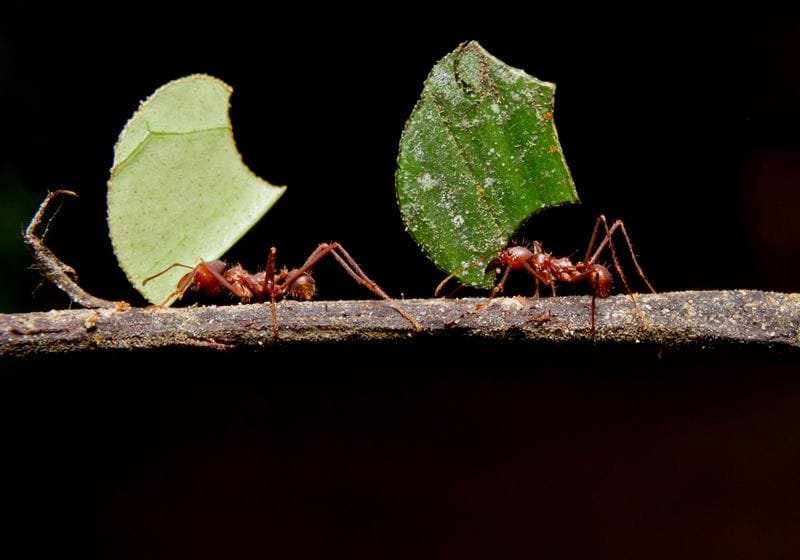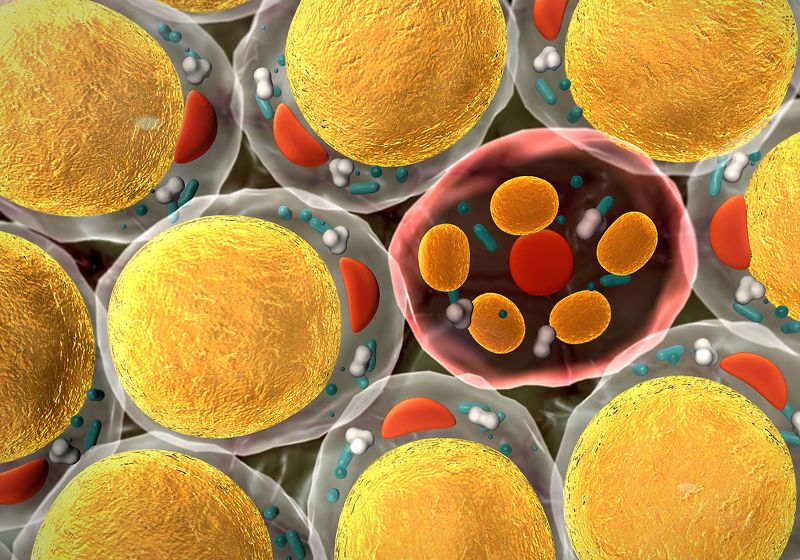Neuropeptides Control Labor Division in Leafcutter Ants

Some ants within the colony patrol the neighborhood to protect the nest from intruders, while others stay inside to care for the young. Various molecular mechanisms, from hormone and neuropeptide signaling to gene transcription and epigenetics, underlie these behaviors—some of which are highly conserved in evolution.1,2
“Studying (social behavior) in invertebrates, which are much more experimentally tractable, has a lot of human relevance,” said Zoe Donaldsona neuroscientist at the University of Colorado Boulder. “We have more and more evidence that even as new traits evolve in new organisms, the same molecular toolkits are used over and over again.”
Shelley Berger, an epigeneticist at the University of Pennsylvania, studies the transcriptional and epigenetic regulation of behavior.
Shelley Berger
In a recent study, Shelley Bergeran epigeneticist at the University of Pennsylvania and her team discovered two neuropeptides that define labor division behavior in leafcutter ants.3 The study, published in Cell, emphasizes the importance of neuropeptides in regulating complex social behaviors and the evolutionary conservation of the molecular mechanisms that underlie these behaviors.
“It’s a very impressive study,” said James Tranielloa sociobiologist at Boston University who was not involved in the research. “It used a lot of state-of-the-art methods, and leafcutter ants offer a really great model to understand the molecular mechanisms of social behavior.”
Ant colonies typically consist of queen and worker castes. In some species, such as the carpenter and leafcutter ants, the latter is further divided into multiple subcastes, which scientists can tell apart based on the animals’ size and behavior.
Berger’s team previously studied subcaste-specific behavior in carpenter ants, where they found that a hormone called JH3 regulates behavior in the two worker subcastes: Major, the large “soldiers”, and Minor, their smaller counterparts that forage food and nurse the young.4 Next, Berger wanted to understand the molecular bases of behavior in a more complex species: the leafcutter ants.
“The leafcutters are the epitome of the most sophisticated ant system,” Berger said.
James Traniello, a sociobiologist at Boston University, studies the evolution of social behavior and collective intelligence in insects. He was not involved in the study.
James Traniello
Leafcutter ants have four worker subcastes: Major, Media, Minor, and Minim, in descending order of size—the average Major head size is more than three times that of Minims. Majors defend the colony and engage in aggressive behaviors such as biting. The intermediately sized Media collect leaves; they’re colloquially known as the leafcutters, which is where the species got its name. Media are like farmers, Berger said, as the leaves they cut are used to grow a fungus that becomes the colony’s food source. Minor and Minim, the two smallest subcastes, stay in the nest to nurse the young and tend to the colony’s fungal farm, respectively.
Berger’s team wanted to find out what molecular mechanisms underlie the visible distinctions between the leafcutter ants’ worker subcastes, so they characterized the whole-brain transcriptome and proteome of each subcaste using RNA-sequencing (RNA-seq) and mass spectrometry, respectively. The researchers identified two neuropeptides, crustacean cardioactive peptide (CCAP) and neuroparsin A (NPA), that were highly enriched in Media and Majors, respectively. They also found that transcriptome profiles alone could reliably distinguish between the larger subcastes that leave the nest, Major and Media, from their smaller counterparts that don’t, Minor and Minim.
Daniel Kronauer, an evolutionary neurobiologist at Rockefeller University, studies the evolution and mechanisms of social behavior. He was not involved in the study.
Daniel Kronauer
“Not many people have looked at the molecular bases of the differences between ant worker castes,” said Daniel Kronaueran evolutionary neurobiologist at Rockefeller University who was not involved in the study. “This was probably the first comprehensive study to look at that.”
Next, the researchers wanted to know if CCAP and NPA could directly affect subcaste-specific behavior. To test the importance of CCAP, Berger’s team knocked down the neuropeptide in Media using small interfering RNA (siRNA); conversely, they injected CCAP into the brains of Majors and Minors, who don’t normally express it. The researchers observed that CCAP knockdown in Media reduced the ants’ “farming” behavior, while its injection in Majors in Minors produced the opposite effect: They now began farming.
Similarly, to investigate NPA’s role, the researchers knocked down the neuropeptide in Majors using siRNA and injected it into Minors. They showed that NPA knockdown caused Majors to take up caretaking behavior, even in the presence of Minors, and suppressed biting. On the other hand, NPA injection reduced caretaking and increased aggression in Minors. Furthermore, the researchers showed that altering CCAP and NPA levels did not only toggle behavior, but also the animals’ transcriptomic profiles.
Zoe Donaldson, a neuroscientist at the University of Colorado, uses mice, prairie voles, and post-mortem human tissue to study individual differences in human behavior. She was not involved in the study.
Zoe Donaldson
“(The findings) are really compelling because (the researchers) performed manipulations in both directions,” said Donaldson, who was not involved in the study. “But what took this paper to the next level is the connection to the naked mole-rats.”
Like ants, naked mole-rats are social animals whose colonies consist of “foragers” that leave the nest and “nurses” that don’t. When Berger’s team performed RNA-seq on the mole-rats’ hypothalamus, the brain region that is functionally comparable to where CCAP and NPA are secreted and localized in the leafcutter ants, they found a significant overlap between the transcriptomic profiles of the naked mole-rat foragers and leafcutter ant Media as well as between the mole-rat nurses and leafcutter Minors.
“It’s a nice demonstration that these (mechanisms) are very conserved,” Kronauer said. “But the naked mole-rat experiments seemed very preliminary, so they’d have to do more work to really nail it down.”
In the future, Berger’s team plans to investigate if CCAP and NPA produce long-term changes in the synaptic structure of leafcutter ant brains, which is how human brains change when people learn new things.
“(These mechanisms) won’t explain why different people work different jobs, for example, because we can’t directly apply something we learn from ants to humans like that,” Donaldson said. “But we can try to see how these families of genes contribute to individual differences in behavior or even indicate risks for mental health disorders.”



